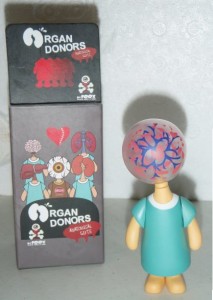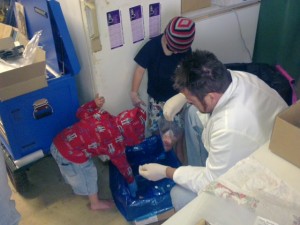
Image: Salvatore Vuono / FreeDigitalPhotos.net
So, where do eyes come from? Miss Vivi has them in stock all the time, so for you, getting them is easy. She orders them in lots of 100’s or 1000’s and a bit of work is required here.
In the beginning, a lot of abattoirs flatly refused to supply them due to disruption of work flow and OHS issues. You see, a big abattoir putting through say 1000 head a day is running at capacity. They don’t normally cut eyes out; they usually go down the chute with the head into the rendering plant. The floor manager needs to take a staff member out of production and implement procedure in accordance with a specific risk analysis to get the eyes. As far as production goes, there’s more money in rib fillet or bacon, so why would they bother?
Because Mr Vivi has a way with the meat men, he’s convinced them to go through the above procedure to extract this product. The cost is we have to order 1000’s of the slippery suckers at a go.
I had the opportunity to talk to one of the floor mangers after our last order and he admitted it’s not his favourite job. It’s a bit fiddly, a bit dangerous, there’s an extra bucket on the floor (for the eyes) that can get in the way. You see, an abattoir is a regimented production line. There is a set procedure for removing the commercial items (tongue, cheek meat etc.) out of the head when they are on the head chain (stock moves through the floor on mechanised lines or chains). Commercial items in turn are placed on conveyors that whisk them off for packaging, so a bucket on the floor is not a usual risk.
So when you ask your butcher for 30 eyes and he can’t do it for you, you know it’s possibly not for his want to help you, but because the abattoir’s not going to drop knives to cut a few out for you. So all you have to do to have as many eyes as you want delivered to your door is fax or email an order to Miss Vivi and she’ll take care of the rest.
![]()








